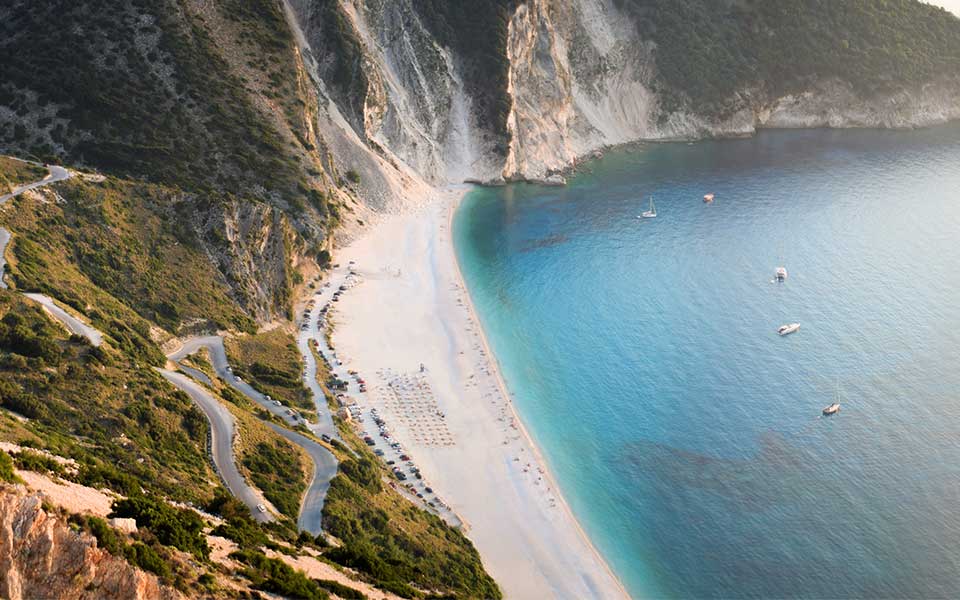Kefalonia is many islands wrapped into one. There’s the Kefalonia of Koutavos Lagoon with its protected sea turtles, the Kefalonia of Mount Aenos with its feral horses, and the Kefalonia of Melissani Cave with its mythical connection to the Greek god Pan. There’s the picturesque island that’s home to the quaint village of Assos, and then there’s the island that boasts the lively town of Argostoli. There’s the Kefalonia of the all-inclusive hotels that welcome British tourists from as early as spring, and there’s the Kefalonia with hiking trails that lead to hidden, idyllic beaches.
The largest of the Ionian Islands – and Greece’s sixth-largest island – Kefalonia is home to many villages. Unfortunately, the architecture that you’ll find in most of these is not characteristic of the styles that dominated prior to the catastrophic earthquake of 1953; instead, the buildings present a modern, homogenized look that’s not particularly “Kefalonian.” Traditionally, the island had two architectural identities, one urban and one rural. The former was manneristic and elegant, with Italian shutters and French ceramic roof tiles, while the latter was freer, less stylized and relied on simpler materials. From an architectural standpoint, there are still two villages in the north of Kefalonia that are particularly interesting: colorful Fiskardo and charming Assos, both of which attract many visitors during the tourist season.
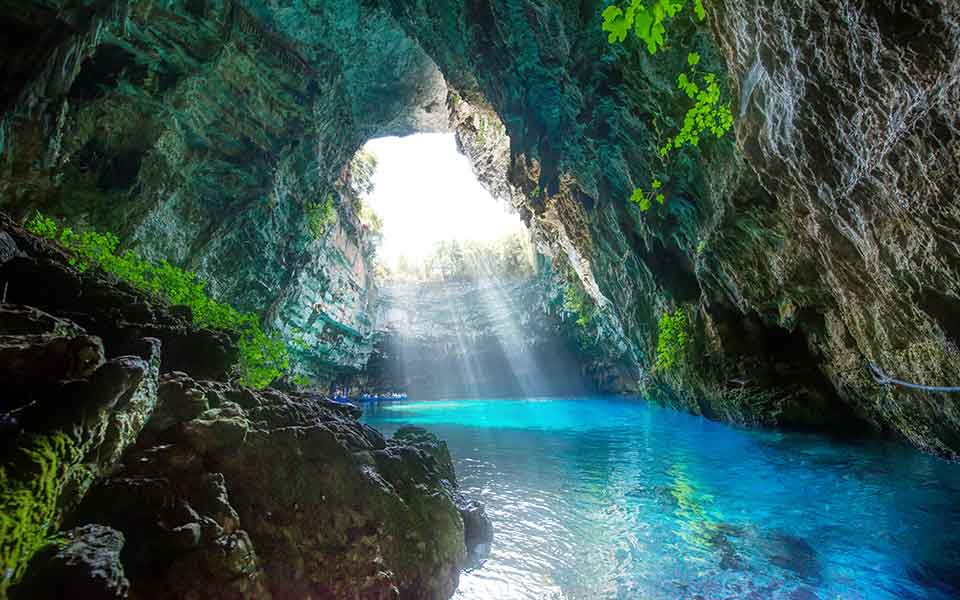
© Shutterstock
Kefalonia’s greatest advantage – and perhaps the main reason why it’s worth visiting – is its natural beauty. The island has managed to keep a large part of its natural environment unspoiled, in spite of a dramatic spike in tourism following the release of the film “Captain Corelli’s Mandolin” in 2001. The venerable oak trees that surround the Monastery of Themata, the forests of Kefalonian firs, the rare Kefalonian violets and the hundreds of other plant species that you’ll find in the Aenos National Park are often present elsewhere on the island as well. In short, you don’t need to head into the mountains to appreciate just how green the island is; you’ll see it for yourself nearly everywhere you go.
Kefalonia lies in an extremely active tectonic region; the Hellenic arc begins at the Ionian Islands and extends all the way to the east to the island of Rhodes. It’s also home to a number of caverns, the most popular of which is Melissani Cave, located on the eastern side of the island, three kilometers from the town of Sami. The cave consists of a sinkhole containing a turquoise-hued lake with a surface area of 2,400 square meters and depths of 10-35m. One of Greece’s most famous caves, and one of its most beautiful as well, Melissani is very popular with tourists. Visitors line up for the boats that take them across it, and they listen to the story of the lake as recounted by boatmen who go off script from time to time and, in addition to providing information on the lake’s geophysical characteristics, sing arias or recite poetry praising the island’s beauty.
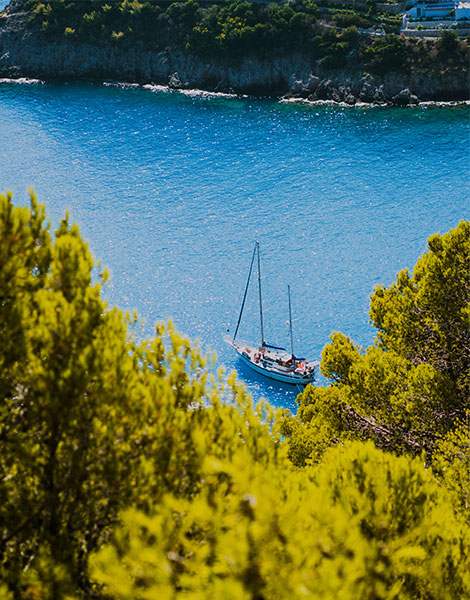
© Shutterstock
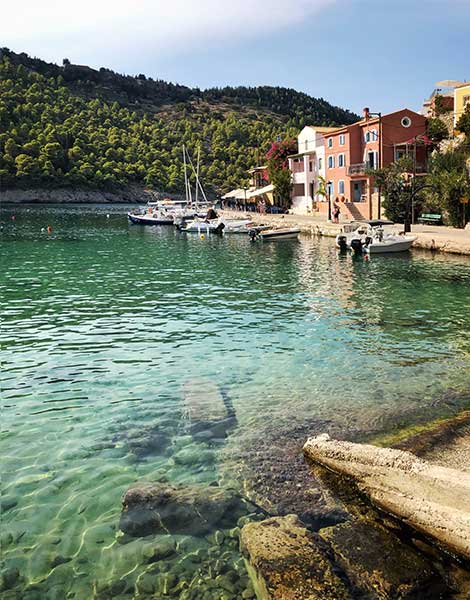
© Victor Malyushev/Unslpash
Melissani Cave is also steeped in mythology; the lake was a place of worship of the god Pan. During excavations carried out here, a figurine of Pan and a ceramic tray featuring nymphs dancing around the deity were found. There are many more caves on the island as well, including the Cave of Zervatis (with its two small brackish lakes separated by a debris cone) and the Cave of Drogarati, with its impressive stalactites.
The island’s caves, impressive as they are, may not be to everyone’s liking, but its beaches seem to be. Kefalonia boasts some of Greece’s most magnificent and idyllic beaches, the most famous of which is Myrtos, located in the north of the island, close to the village of Assos. Long and wide, with white pebbles and unparalleled blue waters that get deep very quickly, Myrtos gets very hot during the day – the sun reflects off the white rocks – so the best time to visit is either morning or late afternoon. Kefalonia has dozens of other beautiful beaches as well: Antisamos, near the town of Sami; family-friendly Mounta in the south, with its fine, dark sand and warm waters that attract kite surfers; remote Fteri, accessible only by boat or by foot through the forest (preferably with a guide); and many others.
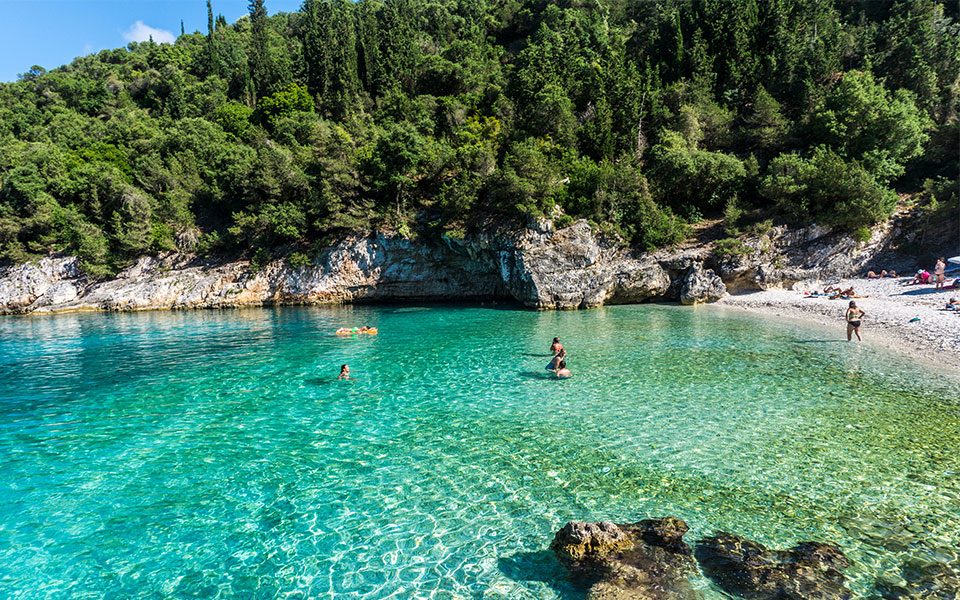
© Shutterstock
Apart from vacationers, the beaches of Kefalonia also attract loggerhead sea turtles (Caretta caretta), which dig their nests in the sand. The research and conservation organization Wildlife Sense, operating in Kefalonia since 2012 with the help of volunteers mainly from abroad, records and protects the nests. This summer, more than 200 nests were catalogued. Koutavos Lagoon in Argostoli is a favorite spot of the Caretta caretta; here, tens and sometimes hundreds of turtles swim around. If you drive past the lagoon, you’ll undoubtedly see members of Wildlife Sense nearby, clearly recognizable in their blue shirts and, if you peer into the water long enough, you might see a turtle or two. Along the shoreline road, you’ll find spots where you can rent hydrobikes or electric boats (these boats don’t make any noise, so they don’t disturb the turtles) and enjoy a boat ride on the waters of the lagoon.
The island’s herd of feral horses, which roams freely in the area of Zoodochos Pigi, on the southeastern slopes of Mount Aenos, is particularly noteworthy. Descendants of animals left to fend for themselves after the end of World War II, these beasts are nearly legendary; everyone talks about them, but it’s rare to catch a glimpse of them. This horse breed, which originated in the Pindus mountain range, has evolved characteristics that include a thick tail, a narrow chest, and a white, black or brown hide. If you’re lucky enough, you may be able to spot a few of them during a trek to Mount Aenos (for more information, visit aenosnationalpark.gr).

